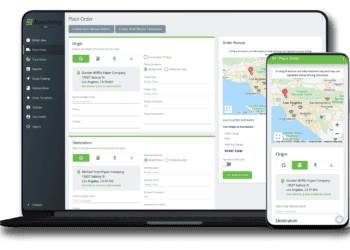Cloud data security policies rely on technologies and procedures to safeguard company data stored in the cloud. Whether stored in an internal database or outsourced to a third party, these procedures should protect the data at all stages of its lifecycle.
As more and more organizations move away from maintaining in-house data centers in favor of keeping data and apps on the cloud, there has been an increase in the importance of ensuring the security of these cloud-based resources.
Over 15 million records were compromised through data breaches in just the third quarter of 2022, providing evidence that a solid data security solution is more vital than ever before.
The Importance of Data Security in the Cloud for Companies
Today’s businesses generate, gather, and store massive volumes of data ranging in importance and sensitivity, from proprietary information to customer financial details. More and more businesses are transferring their data to the cloud. They are storing it in a wide variety of public and private cloud repositories, as well as more sophisticated architectures like multi-clouds, hybrid clouds, and Software as a Service (SaaS) systems.
Cloud architectural complexity, along with increasingly stringent data protection and privacy legislation, as well as various vendors and shared responsibility models, raises several security concerns. These issues can be avoided by partnering with a reputable cloud service provider that also offers a robust protection solution for their customers’ data.
For instance, Liberty Center One is an IT delivery solutions provider that specializes in safeguarding data in highly available settings. Your objectives are in excellent hands by working with the experts on their team and their dependable service quality.
Besides working with a reputable company, there are other things you can do to ensure your data is as safe as possible. Below, we’ll look at a few of them and how you can implement them.
Best Practices for Cloud Data Protection
Be Aware of Your Responsibilities
Despite popular belief, the cloud service provider is not accountable for any data you store with them. Ultimately, you and your service provider are both accountable. Under a shared responsibility model, cloud vendors guarantee the safety of their infrastructure and applications, but end users of such services are still responsible for protecting their data.
Cloud users, often don’t have any insight into how their service is doing since the cloud service provider handles most of the infrastructure. Therefore, it can be difficult to resolve issues when there isn’t a clear understanding of what is done and by who. By communicating with your cloud service provider, you can avoid misunderstandings and unnecessary issues.
Locate Weak Points in Intersystem Security
Cloud environments often combine with other services, both native and external. The more layers of systems and suppliers you add, the more room there is for error. To protect the information and resources that are being utilized and shared via these platforms, businesses must first identify each security flaw and then take appropriate action.
Third-party providers can take certain steps toward compliance and security, but ultimately, it is up to each company to take the necessary precautions. While certain safety standards must be followed by all industries, the provider may or may not provide the same degree of compliance.
Use File-Level Encryption
Even if cloud providers offer rudimentary encryption, businesses should nonetheless deploy complete file-level encryption methods. Beginning with file-level encryption before transferring data to the cloud can offer a solid foundation for security.
Another option is to shard the data, which means breaking it up into pieces. Because of the dispersed nature of the shards’ storage, even if a threat actor were to enter the system, they would have a hard time piecing together the whole dataset.
Safe Data Transmission
A point-to-point security setup uses extra encryption in addition to SSL for all connections. With secure email and file protection solutions, you can monitor and manage who has access to your data, when that access is granted, and how it is removed. Data transfers outside of an organization’s ecosystem can also be restricted to a limited set of categories.
Maintain Regular Backups of Your Data
Generated data replicates regularly and keeps them in a location that is distinct from the primary repository. In the event of a data wipeout or lockout, having recent backups available can prevent irreparable damage to your business. You’re also able to go on working offline with the help of data replicas even when the cloud’s resources are unavailable.
Final Thoughts
Since more and more companies are storing their information in the cloud, it is crucial to strengthen cloud data security. One important thing to remember is that a good cloud data security strategy will be tailored to your specific business and built with expansion in mind.







